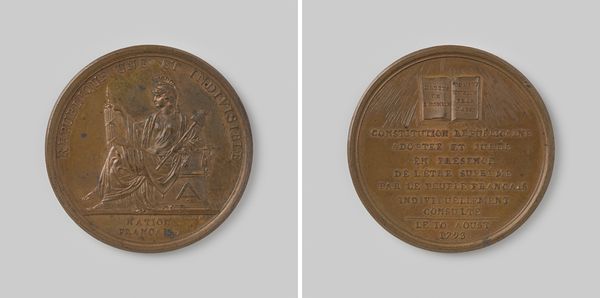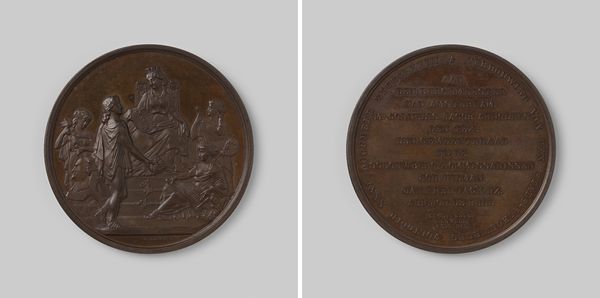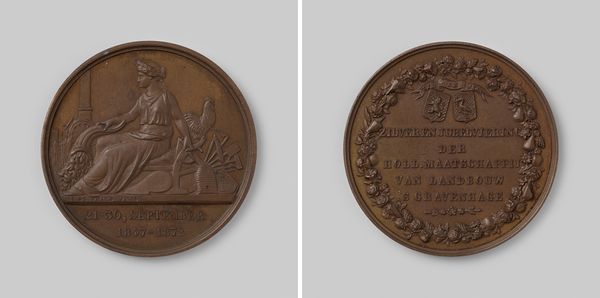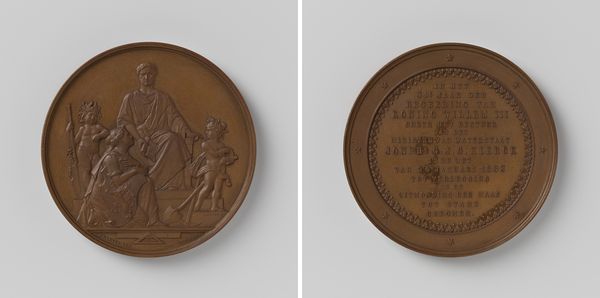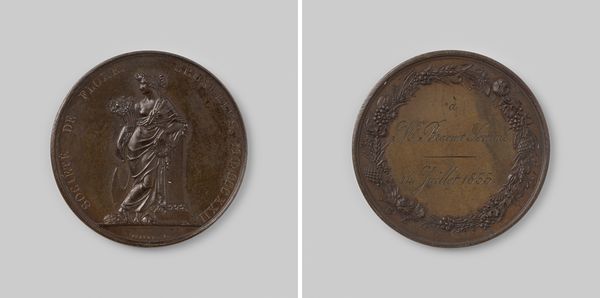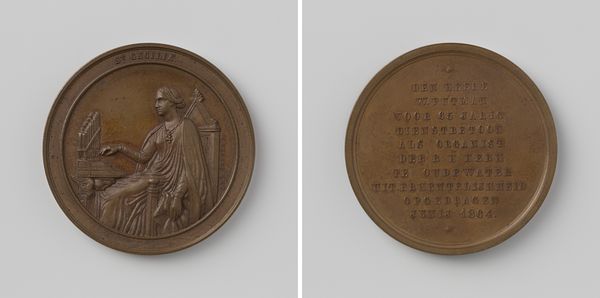
Vijftigjarig bestaan van het Haags Genootschap tot Verdeediging van de Christelijke Godsdienst 1835 1835
0:00
0:00
johangeorgeholtzhey
Rijksmuseum
relief, bronze, sculpture
#
medal
#
neoclacissism
#
sculpture
#
relief
#
bronze
#
sculpture
#
history-painting
Dimensions: diameter 6.2 cm, weight 120.16 gr
Copyright: Rijks Museum: Open Domain
Editor: Here we have a bronze medal from 1835 by Johan George Holtzhey, commemorating fifty years of the Hague Society for the Defense of the Christian Religion. I’m struck by the weight and density I imagine it having, and the almost industrial feel given by the crisp lines. What stands out to you in this piece? Curator: I’m particularly drawn to the material conditions of its creation. Bronze, an alloy of copper and tin, signifies a level of investment and resource. The labour involved – the mining, smelting, and the skilled craftsmanship required for the relief – points to the economic and social structures upholding this religious society. Consider also how the medal was produced: cast, likely in multiples, suggesting a system of distribution and exchange that would be important. Editor: That's a fascinating way to look at it. I was focusing on the symbolism—the figure with the shield and the religious iconography—but thinking about the bronze itself… it gives the medal a whole new layer of meaning, doesn’t it? Almost as if the very earth is backing up their religious conviction! Curator: Exactly! It challenges this idea of spiritual defense. What is the ‘defense’ made of? This bronze is a testament to very material and economic activities, raising questions of how those resources were accrued and who had access to them. It also highlights the relationship between religion and power within the Netherlands at that time. It asks us to consider who exactly was commissioning and possessing these medals? Editor: I see your point. It makes you question the intent. It really goes beyond a simple commemorative piece and into an statement of material resources. Thanks, that's really helped me think differently about it! Curator: Absolutely. It is important to look at the societal fingerprints within a work of art. The story told, and the untold narratives buried within the materials themselves.
Comments
No comments
Be the first to comment and join the conversation on the ultimate creative platform.
